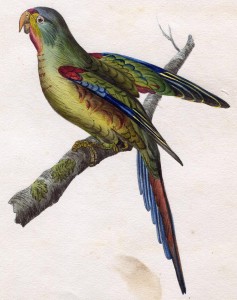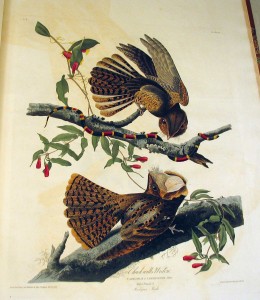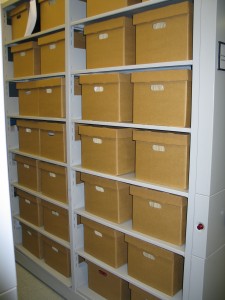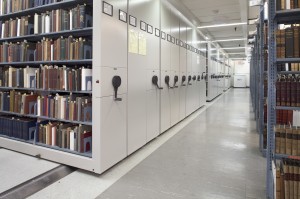 A fascinating recent acquisition relating both to our ornithology and sporting collections, this manuscript game book records the game birds (and other critters) shot by the gentleman sportsman George Harry Grey, 7th Earl of Stamford, 3rd Earl of Warrington (1827-1883) and his father George Harry Grey, 8th Baron Grey of Groby (1802-1835) over a period of forty years, from 1821 to 1861. The family owned large estates at Enville in Staffordshire, Bradgate Park in Leicestershire, Dunham Massey in Cheshire and Stalybridge near Manchester. The pre-printed pages includes columns for “pheasants, partidges, hares, rabbits, woodcocks, snipes, wild ducks, teals, landrails, grouse.” “Persons out” shooting are recorded throughout.
A fascinating recent acquisition relating both to our ornithology and sporting collections, this manuscript game book records the game birds (and other critters) shot by the gentleman sportsman George Harry Grey, 7th Earl of Stamford, 3rd Earl of Warrington (1827-1883) and his father George Harry Grey, 8th Baron Grey of Groby (1802-1835) over a period of forty years, from 1821 to 1861. The family owned large estates at Enville in Staffordshire, Bradgate Park in Leicestershire, Dunham Massey in Cheshire and Stalybridge near Manchester. The pre-printed pages includes columns for “pheasants, partidges, hares, rabbits, woodcocks, snipes, wild ducks, teals, landrails, grouse.” “Persons out” shooting are recorded throughout.
790 Grouse. 69 black game. 20 snipes. 16 partridge. 7 red deer. 13 roe deer. 7 hares. 4 golden plover. 2 blue hares. 12 ducks. 2 ptarmigan. 280 trout. 36 pike. 11 salmon. 3 eels. One trout weighed 18 lb. another 8 lb. …
And finishing up the memorandum this entry:
At Do. 2 days, 5 guns, 1834. 399 pheas., 264 hares. Bradgate Park vermin list, 1834, by 4 keepers. 410 weasels, 224 jays, 164 crows, 133 magpies, 109 cats, 66 hawks, 13 herons, 9 owls (1128).
The last entry made by Baron Grey of Groby was for September, 1835. The register was not started again until 1844 by his son.
–Sally Dickinson, Associate Curator













